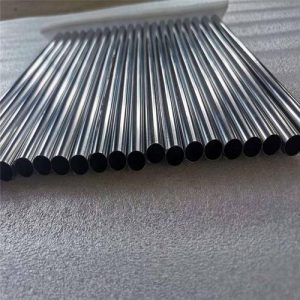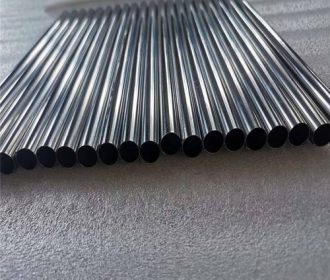In the atmosphere or aqueous solution, the surface of the tantalum material will immediately form a very dense oxide film, which has a very good protective effect on the tantalum matrix, so that tantalum has extremely excellent corrosion resistance. The corrosion resistance of tantalum is similar to that of glass.

Except for hydrofluoric acid, fuming sulfur trioxide and concentrated sulfuric acid, concentrated phosphoric acid, and alkali at high temperature (above 180 ℃), tantalum is stable to other acids (hydrochloric acid, sulfuric acid, nitric acid, phosphoric acid) and aqua regia (reaction rate is less than 0.01 mm/a).
Tantalum has important uses in the chemical industry and is an ideal material for the manufacture of waste acid recovery equipment, but the expensive price restricts the scale development of tantalum in the anti-corrosion industry.
Adding 2.5% tungsten to tantalum to form Ta2.5W alloy will not weaken its corrosion resistance, nor increase its density too much, but it can increase its strength. Therefore, it is possible to further roll thin-walled pipes, which can greatly reduce costs in the field of the anti-corrosion industry, and further promote the application of tantalum waste acid recovery equipment.
The development history of tantalum equipment
As early as the 1940s, developed countries already used tantalum to make waste acid treatment equipment. Tantalum is the material of choice for equipment that can handle acids other than hydrofluoric acid, so tantalum plays a significant role in industries that generate large amounts of waste acid.
Countries around the world are studying the use of tantalum’s good processability and super corrosion resistance to process waste acid recovery equipment. In the 1930s and 1940s, the United States manufactured tantalum equipment and obtained important applications in the acid industry. For example, DuPont of the United States has become one of the world’s largest tantalum equipment companies, Astro Metallurgy of the United States, BSL of France, and COMETIC of Germany have also become powerful international tantalum equipment manufacturing companies.
Tantalum waste acid recovery equipment
The exterior of the tantalum waste acid recovery equipment is made of stainless steel as a load-bearing structure; it is lined with tantalum or tantalum 2.5 tungsten plate to resist acid corrosion; its inside is a device made of tantalum tube for heating or heat exchange device.
Process of waste acid recovery
The continuous concentrated distillation process is used to recover the waste acid. The liquid enters from the back-extracted liquid inlet, and then is preheated in the second-effect chamber by gaseous water vapor and acid volatilized steam, then enters the vaporization chamber for further heating, and then enters the evaporation chamber and is coiled.
Heated by the heater, the acid and water vapor enters the second-effect chamber through the vaporization chamber, the fractionation chamber, and the connecting pipe. After the second-effect chamber is initially cooled, it enters the condensation chamber to condense into usable acid. Tantalum waste acid recovery equipment is used in the rare earth industry or acid regeneration industry. Because the recovery process of rare earth and waste acid uses a fully closed system and is a full physical process, the degree of recovery of rare earth and acid is high.
Advantages of tantalum equipment
Reasonable price evaluation is a prerequisite for the promotion and application of tantalum waste acid recovery equipment. The evaluation of economics should not only consider the original manufacturing cost but also take into account post-maintenance maintenance, spare parts, corresponding labor costs and loss of production, etc. Compared to various aspects, tantalum waste acid recovery equipment has irreplaceable advantages over other metals and non-metals in the recovery and reuse of rare earth and waste acid.
Waste acid recovery equipment made of tantalum plate and tantalum tube has a long service life and low maintenance costs for long-term use. The tantalum waste acid recovery equipment has a good process connection, which comprehensively solves the problems of salt recovery, acid regeneration, and continuous production. It can make full use of the waste heat of recycled materials, and it has an obvious energy-saving effect and good economic benefits.
Stanford Advanced Materials supplies high-quality tantalum products to meet our customers’ R&D and production needs. Please visit https://www.samaterials.com/ for more information.

Recent Comments